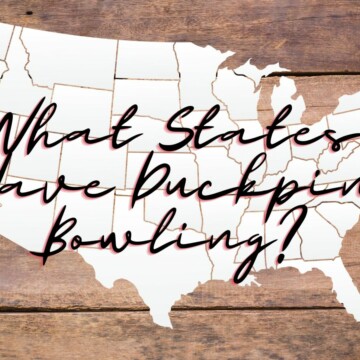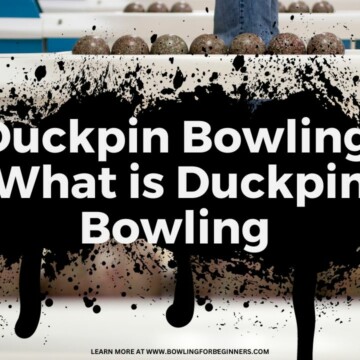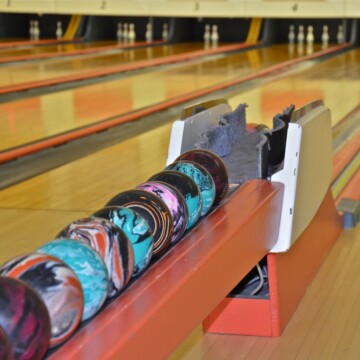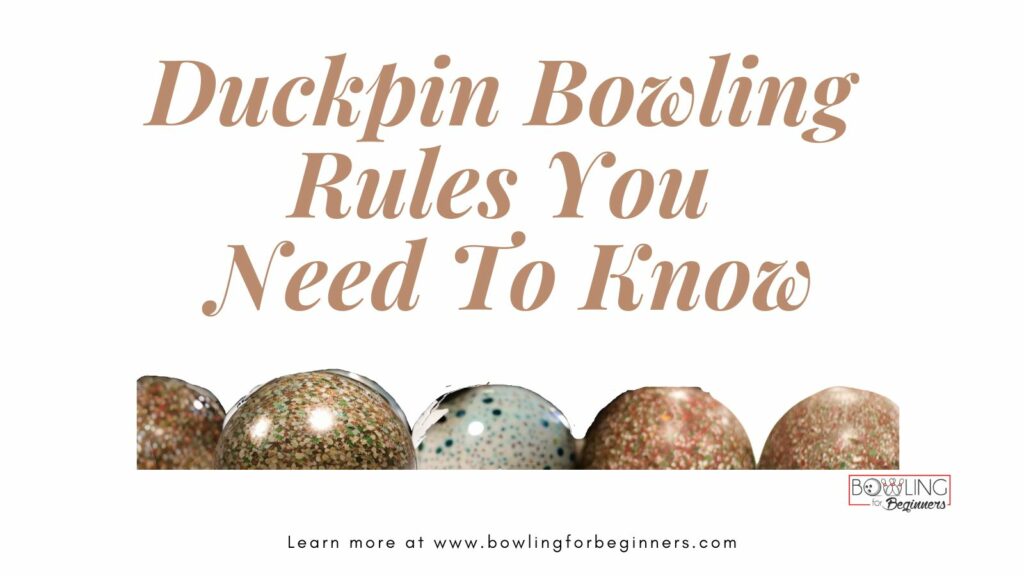
Are you thinking about getting into duckpin bowling - the game with ten pins and a small ball without finger holes? There’s no better time than the present! On the surface, it might look like the game is ultra simple, and it is to an extent, but it’s not without rules and nuances.
This guide is for newbies who want to get a good handle on the game and learn the basic rules. I believe you'll come to the conclusion duckpin bowling tips in this guide are exactly what you need. Let’s get right into it!
Contents
Basic Duckpin Bowling Rules Beginners Should Know
At the most basic level, the objective of duckpin bowling requires you to roll small, light, holeless bowling balls down the lane in an attempt to knock down as many pins as possible. However, there's a little bit more to the game beginners and casual duckpin bowlers should know - they are based on the rulebook from the National Duckpin Bowling Congress (Congress).
Going Over the Foul Line Gets You a Penalty
The foul line is a line that separates the approach from the actual lane. For safety reasons (the actual playing lane is slippery), the foul line should never be crossed. In addition, you can lose points and end your frame when you step over (or if clothing items cross) the foul line. What actually happens depends greatly on which throw it is: first, second, or third.
First roll: any knocked-down pins are reset. No points are given for the knocked-down pins, and you lose that ball. There are 2 rolls remaining in the frame.
2nd roll: basically, if you foul on your second ball, you lose points and the roll. However, any pins knocked down are counted as your 3rd roll. The frame is ended.
3rd roll: If you foul on your 3rd roll, and pins are knocked down, the pins are not counted, and the roll is lost. the frame is ended.

You Have to Use the Right Ball
A duckpin bowling ball is special and should be no heavier than 3 lbs 12 oz and should be no more than 5 inches in diameter and no smaller than 4 ¾ inches. Using a ball that doesn’t meet the formal qualifications can give you an unfair advantage in the game and damage the lanes. For instance, ten pin bowling balls on duckpin lanes are not suitable.
Duckpin balls are rolled on special lanes that differ from ten pin bowling lanes. Duckpin lanes have different gutter sizes - the gutters are smaller. So, rolling a ball that's too big down a duckpin bowling lane could mess up the machinery behind the scenes, delay your game, or both.
You May Not Roll More Than 3 Balls per Frame
You get three rolls per frame are the rules of duckpin bowling. Rolling more than 3 balls in a frame in duckpin bowling is not permitted. In regular bowling, you only get two balls per frame, so many who play duckpin bowling welcome the extra ball per frame.
If You Get a Strike, You’re All Done for the Frame
A strike is when you knock down all of the pins with your first ball. Though you do get up to 3 balls to roll for each frame, you won’t always use all of them. Once all of those pins are knocked down (in the same frame), it’ll be the next bowler’s turn.
This doesn’t apply to the tenth (last) frame (more on that later).
How to Play Duckpin Bowling
After reading through the previous rules, you might have a feeling that duckpin bowling might be complicated to play. But that’s not the case. Playing duckpin bowling is pretty straightforward, though scoring highly in the sport is incredibly difficult.
Below, we’re going to give you a rundown of how to play the sport to help you out:
- Grab your gear: Get your hands on a duckpin ball that feels comfortable.
- Pick a Lane: Choose an open lane and enter your name in the system.
- Grip Practice: Get comfy holding the ball in your palm.
- Set Stance: Stand behind the foul line, feet apart, ball close to you.
- Aim: Target the "pocket" between the 1-pin and the 2 or 3-pin, or the head pin (pin number 1).
- Plan Approach: Do practice steps; most use a three- or four-step approach.
- Roll: Step, swing, aim for your target, and release (underhand motion).
- Follow Through: Keep your arm moving upward after release (underhand).
- Observe: Watch the ball's impact and make mental notes.
- Take Turns: Roll up to three balls per frame, then it's the next player's turn.
- Automatic Scoring: Machines handle the scoring.
- Finish: Complete 10 frames; highest score wins.
How Does Duckpin Scoring Work?
Scoring in duckpin bowling is not rocket science, which may be a relief for you. It is scored much like regular bowling, except for the distinction that there are three throws in a frame.
The score tallied in the scoring system will equate to the number of pins the bowler knocks down in a frame (except in the case of strikes and spares)
The player with the highest score at the end of the ten frames is the winner of the game.
A few of the symbols you'll see when playing this bowling variation include:
- “X” for strike
- “/” for spare
- “-” when no pins are knocked down during a roll
How Do You Score Duckpin Bowling?
Now, it’s time to get into the tallying of it all. Your duckpin bowling score is cumulative from frame to frame, meaning you add the scores of individual frames to get a running total.
Here's how you tally it:
- Open Frame: If you don't knock down all the pins in a frame after three attempts, your score for that frame is the total number of pins knocked down. Add this to your previous frame's running total.
- Spare: If you knock down all the pins within a frame but take more than one roll to do it, you'll add ten points to the number of pins knocked down in the next roll. Add this total to your running tally from the previous frame.
- Strike: If you knock down all 10 pins on the first roll, your score for that frame is 10 plus the total pins knocked down in the next two rolls. Add this to your running total from the previous frame.
- 10th Frame: Scoring for the tenth frame is different from the rest of the game. In the tenth frame, your score is calculated a little differently than it would be for the rest of the frames. Here’s how it goes based on how your first roll goes:
- If you get a strike on the first roll of the tenth frame, you get two more rolls to add to your score. In this case, you have the opportunity to get two more strikes, adding those points and the maximum pin count for each subsequent roll to the original strike. It's basically your chance to really boost your score at the tail end of the game.
- If you get a spare on your first two rolls in the tenth frame, you get one additional roll to add to your score. The number of pins knocked down in that third roll is added to the spare, thereby increasing your score for that final frame.
- If you don't get a strike or a spare, then the tenth frame functions like any other frame—you tally up the pins you've knocked down in your three rolls, and that's it, you're done.
Now, in modern duckpin bowling centers, this is taken care of by automated scoring machines. These machines use sensors to detect pin falls, fouls, and rolls to update the score automatically, meaning you can focus more on your technique and less on the math.
To learn more about an easy way to score duckpin bowling, read this article.
How Many Throws Do You Get In Duckpin Bowling?
In duckpin bowling, you get up to three throws per frame to knock down all 10 pins. This is one of the unique aspects that sets it apart from standard ten-pin bowling, where you only get two throws per frame.
You have a total of 10 frames in a game, so with three throws per frame, you could potentially have up to 30 throws in a complete game. However, if you knock down all the pins in fewer than three throws within a frame, you won't use all three.
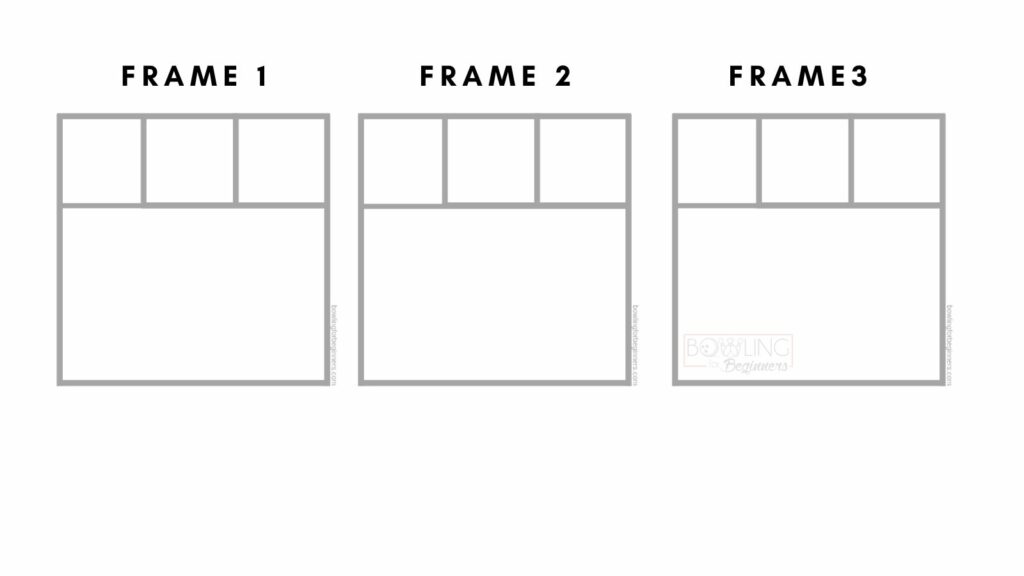
Do You Wear Bowling Shoes for Duckpin Bowling?
Depends. Yes, you should wear bowling shoes for duckpin bowling if there is an approach similar to tenpin bowling. To keep the bowling floors in good condition, street shoes aren’t likely to be allowed in the bowling alley where you’ll be playing. And lastly, to ensure that you’re able to get the glide you need for proper form and a smooth release, you’ll need the right footwear.
However, if the Duckpin bowling is set up with no approach, like Skee Ball where the lane is raised, bowling shoes aren't needed.

Related Articles
- Number of Bowling Pins
- Duckpin Bowling vs Regular Bowling
- What’s the Highest Possible Score in Bowling
So, there you have it - the basic duckpin bowling rules you need to know about as you continue to learn about the sport. As you might have gathered, it's very different from ten pin bowling, mini bowling, Candlepin bowling, lawn bowling, and nine pins.
We hope you found all the information you were looking for and that you feel more ready to dive into the sport.
Kira Byrd, a Certified Fraud Examiner, holds a B.S. in Accounting from the University of Alabama at Birmingham. With a passion for bowling from her childhood, Kira has poured her expertise and personal experiences into creating and nurturing Bowling For Beginners. Kira's mission is to meet new bowlers where they are and guide them toward consistently achieving higher scores. With a focus on skill development and strategic techniques, she empowers readers to take control of their game and unlock their true potential.
Bowling For Beginners embodies strict editorial integrity, ensuring reliable and unbiased information. Kira's commitment to delivering valuable insights and practical strategies is reflected in every article. Here's an explanation of our editorial policy and how we get money.


